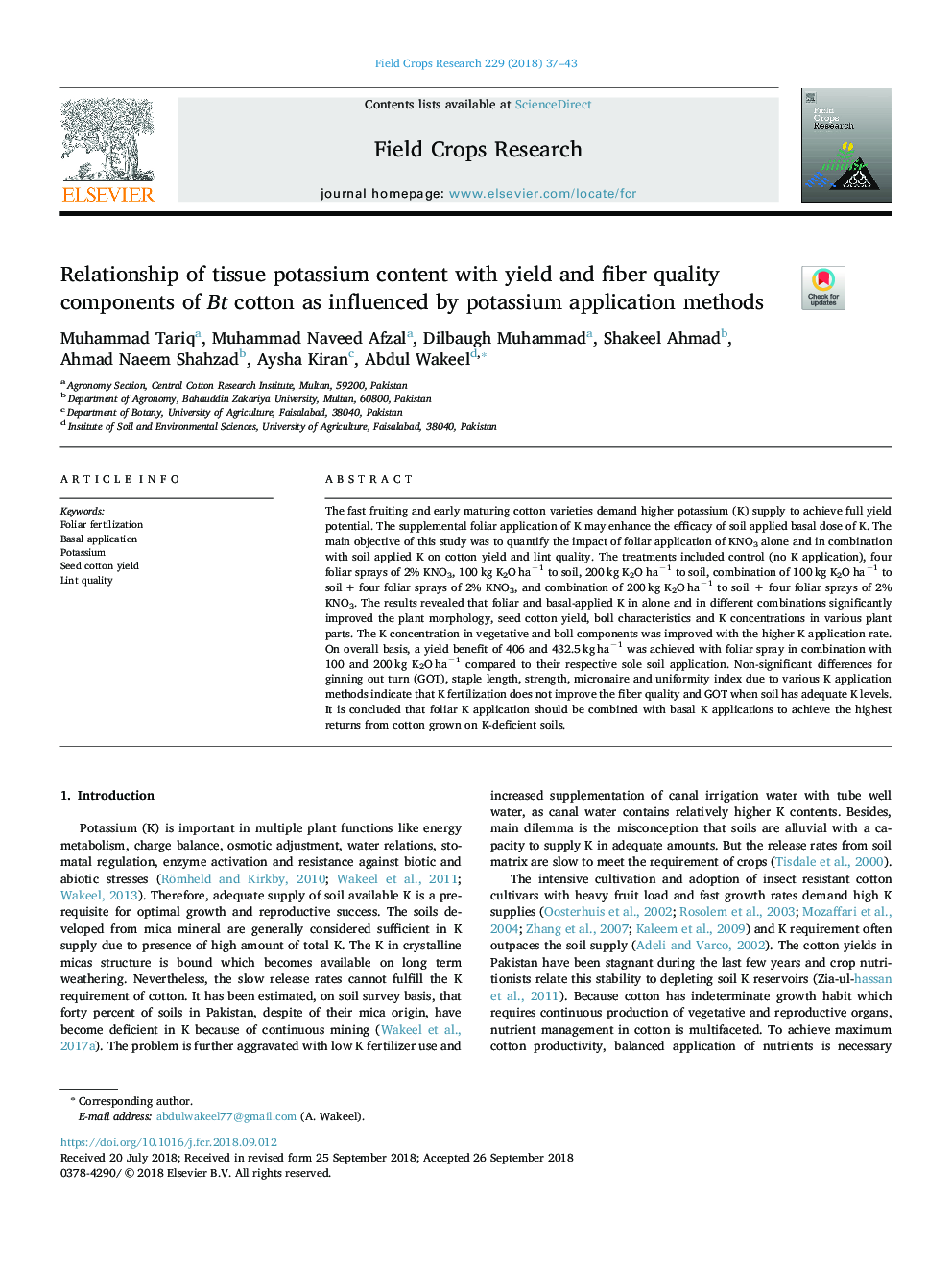| Article ID | Journal | Published Year | Pages | File Type |
|---|---|---|---|---|
| 11024954 | Field Crops Research | 2018 | 7 Pages |
Abstract
The fast fruiting and early maturing cotton varieties demand higher potassium (K) supply to achieve full yield potential. The supplemental foliar application of K may enhance the efficacy of soil applied basal dose of K. The main objective of this study was to quantify the impact of foliar application of KNO3 alone and in combination with soil applied K on cotton yield and lint quality. The treatments included control (no K application), four foliar sprays of 2% KNO3, 100âkg K2Oâhaâ1 to soil, 200âkg K2O haâ1 to soil, combination of 100âkg K2Oâhaâ1 to soilâ+âfour foliar sprays of 2% KNO3, and combination of 200âkg K2Oâhaâ1 to soil + four foliar sprays of 2% KNO3. The results revealed that foliar and basal-applied K in alone and in different combinations significantly improved the plant morphology, seed cotton yield, boll characteristics and K concentrations in various plant parts. The K concentration in vegetative and boll components was improved with the higher K application rate. On overall basis, a yield benefit of 406 and 432.5âkgâhaâ1 was achieved with foliar spray in combination with 100 and 200âkg K2Oâhaâ1 compared to their respective sole soil application. Non-significant differences for ginning out turn (GOT), staple length, strength, micronaire and uniformity index due to various K application methods indicate that K fertilization does not improve the fiber quality and GOT when soil has adequate K levels. It is concluded that foliar K application should be combined with basal K applications to achieve the highest returns from cotton grown on K-deficient soils.
Related Topics
Life Sciences
Agricultural and Biological Sciences
Agronomy and Crop Science
Authors
Muhammad Tariq, Muhammad Naveed Afzal, Dilbaugh Muhammad, Shakeel Ahmad, Ahmad Naeem Shahzad, Aysha Kiran, Abdul Wakeel,
